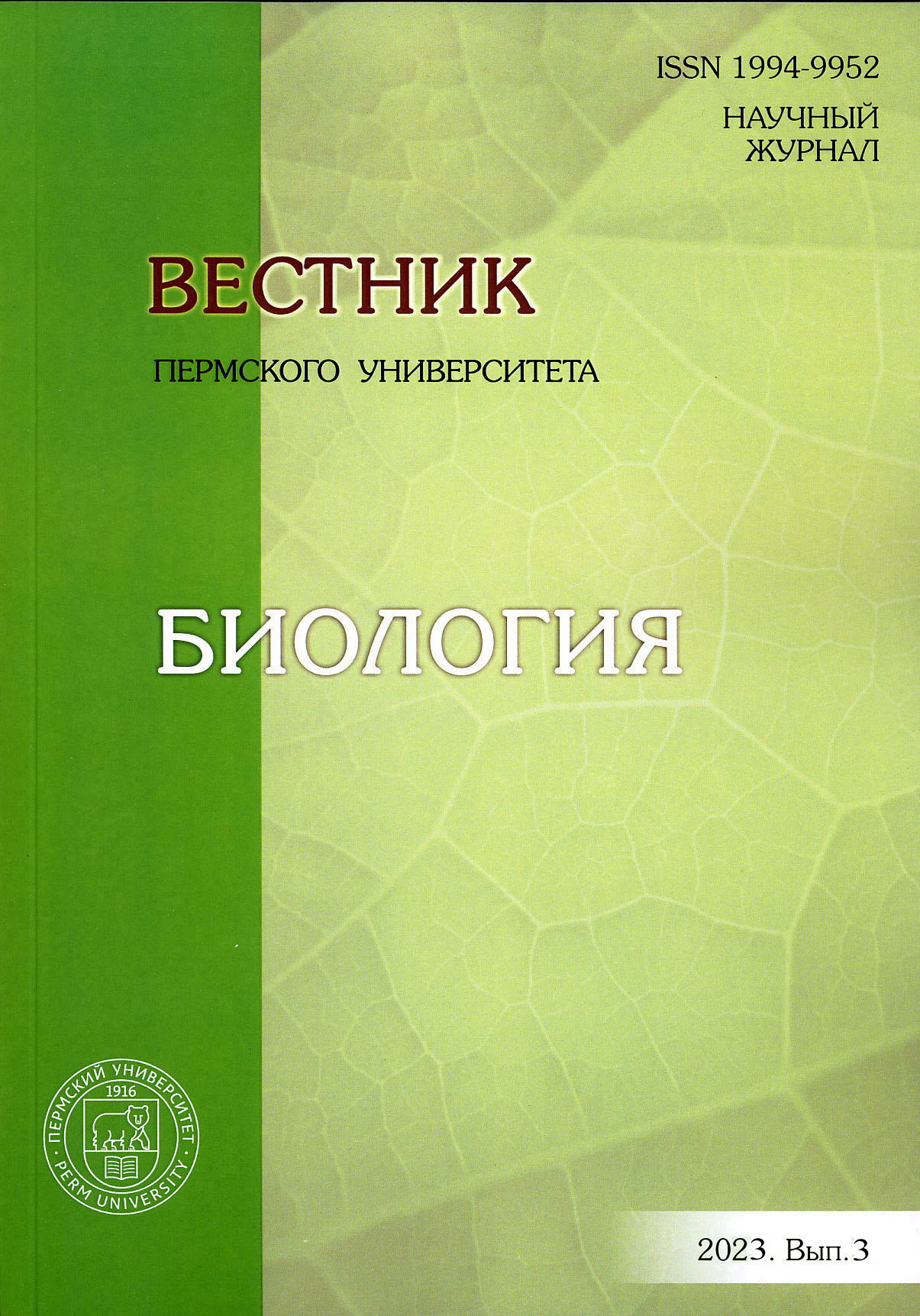Cytological features of mononuclear leukocytes cultured in the presence of polyamines
Main Article Content
Abstract
Article Details
References
Бархина Т.Г., Гущин М.Ю., Алексеев Ю.В. Ультраструктурный анализ различных популяций кле-ток крови при аллергопатологии и воздействии светокислородного и фотодинамического эффектов // Вестник новых медицинских технологий. 2018. Т. 12, № 4. С. 218–224.
Бухарин О.В. Адаптивные стратегии взаимодействия возбудителя и хозяина при инфекции // Вест-ник Российской академии наук. 2018. Т. 88, № 7. С. 637–643.
Годовалов А.П., Карпунина Т.И. Влияние полиаминов бактериального происхождения на продук-цию ключевых цитокинов в культуре мононуклеарных лейкоцитов человека // Медицинская иммуноло-гия. 2022. Т. 24, № 2. С. 257–262.
Годовалов А.П. и др. Полиамины как рецептор-независимые факторы агрессии условно-патогенных микроорганизмов // Иммунопатология, аллергология, инфектология. 2019. № 3. С. 91–94.
Годовалов А.П. и др. Люминолзависимая хемилюминесценция как средство выявления маркеров окислительного стресса // Высокие технологии, определяющие качество жизни: материалы II Между-нар. науч. конф. Пермь, 2018. С. 201–203.
Морозов И.А., Карпунина Т.И., Годовалов А.П. Кадаверин как регулятор активности про- и эука-риотических клеток // Аллергология и иммунология. 2018. Т. 19, № 3. С. 149–150.
Нестерова Л.Ю., Негорелова Е.В., Ткаченко А.Г. Биогенные полиамины как модуляторы активно-сти Quorum sensing системы и биопленкообразования Vibrio harveyi // Вестник Пермского университета. Сер. Биология. 2019. Вып. 3. C. 300–308.
Сидельникова А.А., Начева Л.В. Морфологические изменения периферической крови в динамиче-ском наблюдении при остром описторхозе у экспериментальных животных // Современные проблемы науки и образования. 2016. № 6. С. 504–512.
Силачев Д.Н., Плотников Е.Ю., Горюнов К.В. Роль полиаминов в жизнедеятельности клеток репро-дуктивной системы // Цитология. 2018. Т. 60, № 3. С. 164–172.
Carriche G.M. et al. Regulating T-cell differentiation through the polyamine spermidine // The journal of allergy and clinical Immunology. 2021. Vol. 147, № 1. Р. 335–348.
Equi A.M. et al. Oxidation of putrescine and cadaverine derivatives by diamine oxidases // Tetrahedron. 1991. Vol. 47, № 3. Р. 507–518.
Fujiswa S., Kadoma Y. Kinetic evaluation of polyamines as radical scavengers // Anticancer Research. 2005. Vol. 25, № 2A. Р. 965–970.
Hesterberg R.S., Cleveland J.L., Epling-Burnette P.K. Role of polyamines in immune cell functions // Medical sciences (Basel, Switzerland). 2018. Vol. 6, № 1. 22. doi: 10.3390/medsci6010022.
Kurihara S. Polyamine metabolism and transport in gut microbes // Bioscience, biotechnology, and bio-chemistry. 2022. Vol. 86, № 8. P. 957–966.
Lavizzari T. et al. Histamine, cadaverine, and putrescine produced in vitro by enterobacteriaceae and pseudomonadaceae isolated from spinach // Journal of food protection. 2010. Vol. 73, № 2. Р. 385–389.
Liu G. et al. Putrescine enhances intestinal immune function and regulates intestinal bacteria in weaning piglets // Food Function. 2019. Vol. 10. Р. 4134–4142.
Mei Y. et al. A sequential injection analysis chemiluminescent plant tissue-based biosensor system for the determination of diamine // Biosens. Bioelectron. 2007. Vol. 22, № 6. Р. 871–876.
Puleston D.J. et al. Polyamine metabolism is a central determinant of helper T cell lineage fidelity // Cell Vol. 2021. Vol. 184. Р. 4186–4202.
Shah P. et al. Polyamine biosynthesis and transport mechanisms are crucial for fitness and pathogenesis of Streptococcus pneumoniae // Microbiology. 2011. Vol. 57, № 2. Р. 504–515.
Shah P., Swiatlo E. A multifaceted role for polyamines in bacterial pathogens // Molecular microbiology. 2008. Vol. 68, № 1. р. 4–16.
Shubin A.V., Demidyuk I.V., Komissarov A.A. Cytoplasmic vacuolization in cell death and survival // Oncotarget. 2016. Vol. 7, № 34. р. 55863–55889.
Tabor C.W., Tabor H. Polyamines in microorganisms // Microbiological Reviews. 1985. Vol. 49, № 1. Р. 81–99.




